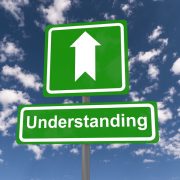What Do Most People Get Wrong About Self-Directed Checkbook IRAs?
The Self-Directed Checkbook IRA is not the most traditional method for investing. As such, there are quite a few myths that can spring up around Checkbook IRAs—how they work, how complicated they are, and what sorts of investments one can make with them. The important thing for anyone considering a Checkbook IRA is to discern what is myth and what is fact. With that in mind, let’s look at some assumptions that people often get wrong about Self-Directed Checkbook IRAs:
“Self-Directed Checkbook IRAs are Too Complicated”
It’s true that the basic structure of a Single Member LLC held within a Self-Directed IRA may seem like the kind of maneuvering that only very wealthy people do—because they can afford fancy accountants. But it’s not nearly as complicated as some people make it out to be. The basic structure is actually relatively simple: holding a Single Member LLC within a Self-Directed IRA. Because Self-Directed IRAs allow you to invest in nontraditional assets like LLCs within a retirement account, establishing checkbook control is simply a matter of getting a legitimate LLC under the umbrella of your IRA.
While it can seem difficult and complex to establish a Single Member LLC off the bat, it’s not nearly as complicated as some people make it out to be. LLCs are very common, and you’ll simply have to work within the structure of your state’s regulations to make sure it’s properly established.
“Self-Directed Checkbook IRAs are Only for the Wealthy”
In truth, a Self-Directed Checkbook IRA can be for any investor who wants to get wealthy, provided they think that this is the strategy for them. A Checkbook IRA is meant to keep assets within the LLC in the retirement account, which in turn helps the money in that account grow tax deferred. That means that it’s possible for investors to considerably grow their wealth by using a Self-Directed Checkbook IRA. You don’t have to be very wealthy to get started.
It’s true that a Checkbook IRA does require a bit of upfront investment. You have to establish the Single Member IRA, and there are fees associated with this—especially when doing it properly. But over the long term, you will find that a Self-Directed Checkbook IRA can be a very accessible, low-fee way to make investments. After all, that’s one of the chief advantages of having the power of the checkbook.
“Self-Directed Checkbook IRAs are Too Expensive”
Forget investments for the wealthy—are Checkbook IRAs prohibitively expensive? You’d be surprised. Setting up the initial Single Member LLC will require that you take on some expenses off the bat. But once you have established the Checkbook IRA, you will find that it’s a low-maintenance, low-fee way to invest. Simply writing out a check to have an investment go into your IRA is an easy thing to do once established.
“It’s Too Much Work to Use a Self-Directed Checkbook IRA”
That depends on your definition of work. It’s true that it’s important for someone with a Self-Directed Checkbook IRA to remain vigilant about how they administer their Checkbook IRA. But in many cases, tax professionals can help you understand what needs to be done. Once you have the Checkbook IRA opened, it’s actually a low amount of work. You can simply write a check for a retirement asset and have it go to your Single Member LLC. If anything, in the long run, a Checkbook IRA can be less work than other methods of investing.
It’s important to understand what’s true and what’s myth when you research opening a Self-Directed Checkbook IRA. Make sure that you have a full knowledge of how these account types work before getting started—and that you do not let the myths intimidate you.
Interested in learning more about Self-Directed IRAs? Contact American IRA, LLC at 866-7500-IRA (472) for a free consultation. Download our free guides or visit us online at www.AmericanIRA.com.









